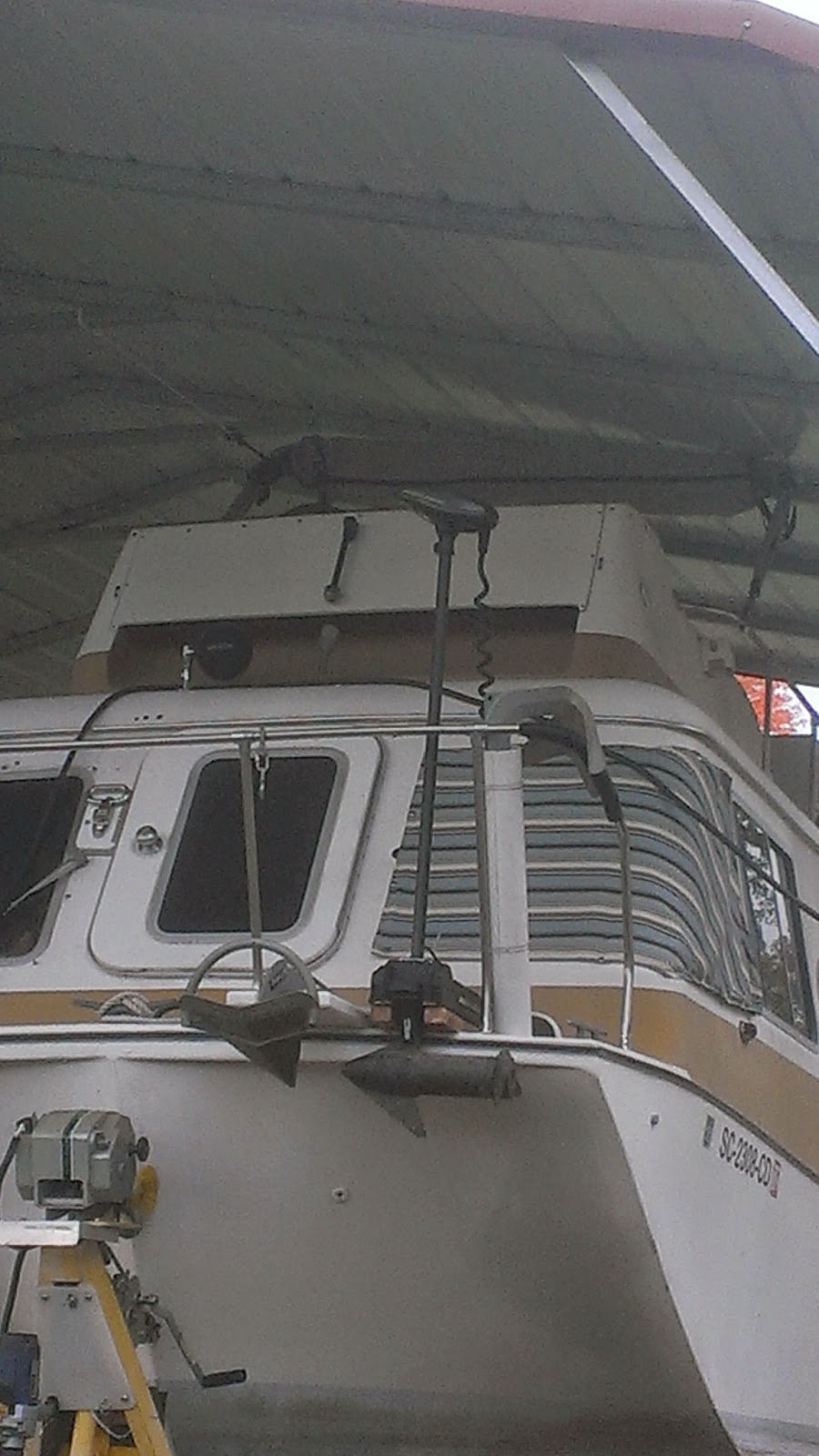Trolling ashore for potty
This got old fast. Especially after the dinghy turned turtle with me in it while trying to get Merlin aboard for a trip to shore. On our next extended outing, to 1000 Islands we taught Merlin to go potty on a mat on the aft deck so the dinghy and trolling motor are no longer needed or even taken aboard.
A while back my son-in-law's dad bought an old pontoon boat which will be converted to a dock. He offered me some of the stuff that came with the boat - all he wanted was the deck and pontoons. One of the things in his pile for the dump was an old trolling motor with no remote -- which I assumed to be one of those foot control things. There were also open ended wire plugs and wires that needed to be attached to who know what?
 |
| What were all these plugs for? |
There was no handle to steer it with either. And I already had a trolling motor that was of no use so I told him I really wasn't interested. I did take some of the other stuff though and when we had it all loaded up in the car he asked again if I didn't want the trolling motor. I said OK, I'll put it up on eBay for parts, so he put it in the trunk along with the charger.
When I got it home, I pulled the plastic off the motor to see where the open wires went. There were small wires with plugs and a couple power wires with corroded terminals. While I was renewing the wiring I came across a circuit board that appeared to have an antenna. This was getting interesting.
Further research showed that this was a high end motor that could either use a wired foot control or a wireless key fob. I poked around further and found a replacement fob for <$50. What the heck, I bought one.
By the time the fob showed up I had everything else pretty much in place and discovered to my amazement that this trolling motor was fully functional.
I still wasn't sure what I was going to do with this thing and it wasn't until I wired up Big Duck with some #6 cable to take a charge from the van's alternator while on the road Van Alternator to Charge Boat Batteries that I was inspired to use that connection for the trolling motor.
 |
| Connector at boat side that leads to Big Duck's house batteries. |
This large trolling motor did not come with a transom clamp, it needed a permanent deck mount. I fastened the motor to a 2 x 10 and walked it around the bow to see if I could find a good place to put this honkus motor. I decided until it proved itself I'd remove the anchor pulpit and mount the trolling motor to the hinges.
Hinged Anchor Pulpit
After I got the trolling motor fixed to the new wood base complete with hinges, I removed the anchor pulpit and put the hinge pins back in with the trolling motor in place. This looked like it would work for a test, but it was going to be quite a hassle removing and storing the trolling motor when I needed to use the anchor. I'd really like a permanent place for the trolling motor if even just for testing.
At this point it was a no brainer to mount a new hinge base right next to the anchor pulpit, so I did.
 |
| White anchor pulpit hinges and wood trolling motor hinges |
 |
| We think the trolling motor propeller will be deep enough? |
 |
| It's hard to believe this rig will actually work? |
With the wireless remote, it this thing works, I'll even be able to use it from the flybridge.
When the trolling motor is locked up, we're talking UGLY here in every sense of the word. But to me, Big Duck's real beauty is in her comfort and utility.










